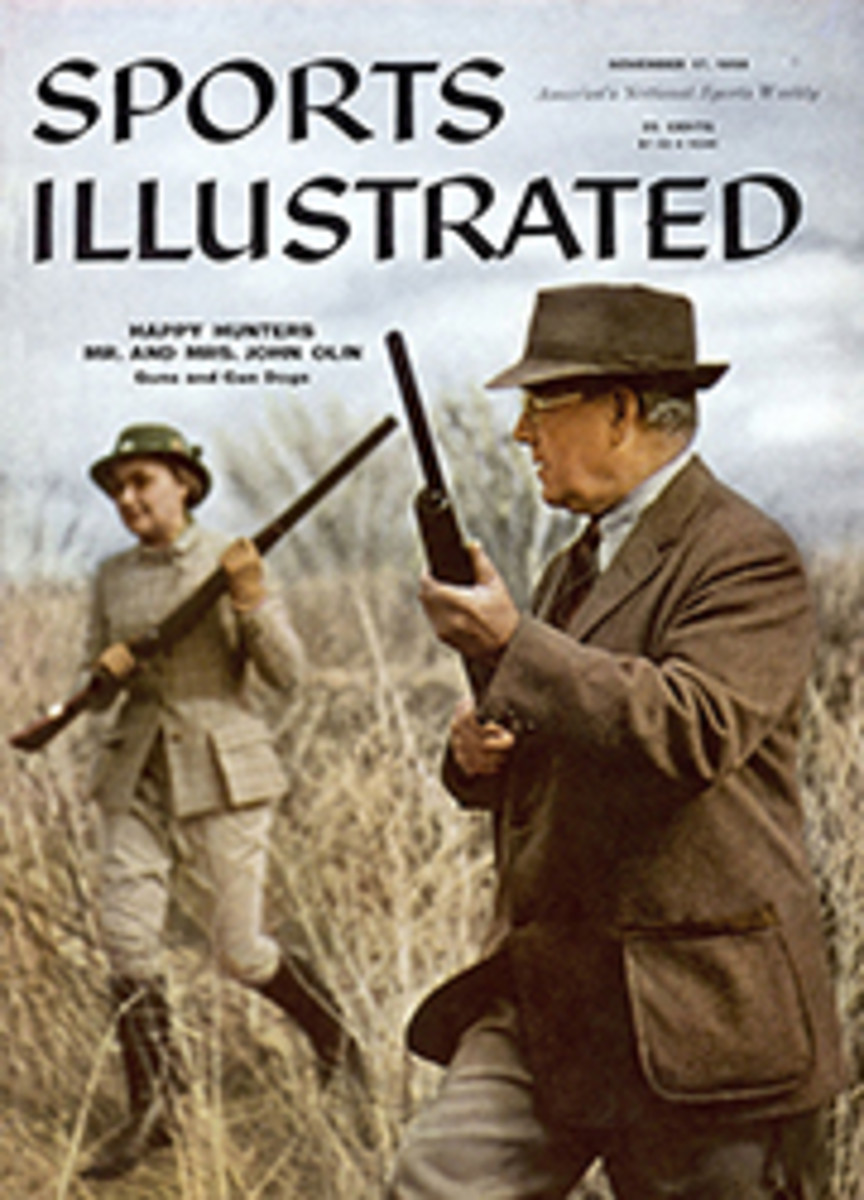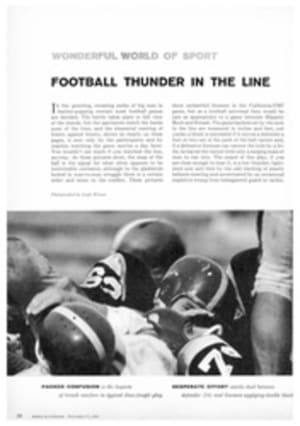
Bright Snows that Painfully Blind
The natural habitat of the skier is a field of white, light-reflecting crystals, blindingly beautiful in their piled up innocence and, on occasion, just menacing enough to be openly feared. On a sunshiny day in the high mountains the snow can blind, and it can blind in such an incredibly painful way that no one who has ever fallen victim to its stabbing glare will ever willingly run the risk again.
If you have ever wondered if you have been snow blind, you haven't. It is unmistakable and altogether different from the ordinary effects of overexposure. If you were to lie down, open your eyes wide and have someone ladle a teaspoon of sand into each (and see that the sand remained there for 24 hours), you would have a very accurate notion of what it feels like to be snow blind. No doubt you would do what all victims are tempted to do. You would rub your eyes, grinding misery upon hurt. Unless you stopped—and fortunately most victims do—you might do permanent damage to your eyes. Instead, most likely, you would use superhuman will, force your hands away from your eyes and choke back the terrible anguish that all people feel when they suddenly realize that they have been struck by something they might well have avoided.
Luckily, snow blindness never strikes with the frequency or force of which it seems capable. The average recreational skier, wearing bad sunglasses—or none at all—usually gets off with a headache, bloodshot eyeballs and a dancing haze across his vision even on bright days. However, the fact that a skier has gotten away without being struck is no good reason he won't get hit sometime. Just when he feels safest and is least on his guard he may be afflicted.
The villain is ultraviolet, the same component of sunlight which causes sunburn. Ultraviolet is invisible, and the amount of ultraviolet in a given amount of sunlight varies considerably. Above 12,000 feet, under certain conditions, the haze and extremely fine dust that absorb much ultraviolet at lower altitudes are usually absent. Since the atmosphere has a miraculous way of dispersing these extremely short wavelengths of light so that at times the sky can contain three or four times as much ultraviolet as direct sunlight, the dangers can be readily appreciated.
Unfortunately, as in the case of sunburn, you never know when you are becoming overexposed to ultraviolet until it is too late. You never know when you are in danger. A number of short exposures within a single day are just as dangerous as if they had all been added into a single long exposure. There is a period of several hours during which, remarkably, no pain whatever is felt, though vision may become cloudy and indistinct.
Thereafter the symptoms pile up fast. The eyes begin to stream uncontrollably and within an hour the eyelids will redden and swell to the point where they can neither open all the way nor shut tightly. The slightest light (even through the lids) becomes a form of extreme torture. Every single involuntary blink is a stab of pain.
This may last only a few hours or, as in a very severe case I myself had in Alaska in 1933, it may totally incapacitate you for four or five days. Sleep is virtually impossible. Even the strongest man will be physically exhausted after a short seizure.
Once you have got it, there is almost nothing that can be done to produce complete relief. Do not use even the weakest local anesthetics except when administered by a physician. They may seriously slow down the healing of the delicate epithelium, which has simply been sunburned. Every conceivable effort should be made to prevent scratching or other physical harm to the eye or lid.
This is easier said than done. It is almost impossible to keep your hands away. Therefore it is important to get cold compresses on your eyes before the pain drives you mad. An occasional plunge of the whole head into cold water always affords real, if brief, relief. When a doctor is not present, the foregoing rules, plus the passage of time, are your greatest allies.
Fortunately, the back of the eye (retina) is never affected, as the cornea absorbs all the ultraviolet before it gets there. The iris, which cuts down the amount of light entering the eye (as the diaphragm of a camera does), lies behind the cornea and in front of the lens. Not so fortunately, the normal and involuntary closing of the iris in intense light does not reduce the danger of snow blindness at all, since it protects the part of the eye behind the affected region.
There are ways to prevent snow blindness, of course. The most effective is to buy a good pair of sunglasses or goggles which will eliminate all the ultraviolet light—and wear them constantly. It is as simple as that.
When you buy sunglasses, though, keep in mind that the darkness of the glasses has no bearing on their own capacity to filter out ultraviolet light. One of the better makes, American Optical's Rose Smoke lens, is not particularly dark, one reason for this being that the dye used to filter out ultraviolet is invisible.
A fairly dark dye in the same lens reduces glare by about 80%, thus eliminating eyestrain, headache and other after-ski symptoms of overexposed eyes. A good pair of glasses should also be much larger than ordinary spectacles and fit fairly close to the face. Goggles make better wind screen, but they tend to fog up when they cut off circulation of air around the eye.
In either case, a good pair of sunglasses will point up the texture and contour of the snow. They will relax you and, if you wear them regularly on the slopes, you will probably avoid the perils of snow blindness.
PHOTO
UNDER INTENSIVE GLARE, GOGGLED MT. McKINLEY SKIER BUILDS IGLOO AT 18,000 FEET
PHOTO
GIANT ICE BLOCKS dwarf hiker in region where snow yearly reaches 100-foot depth.
PHOTO
FROM BEHIND ideal sunglasses, Author Bradford Washburn of Boston Museum of Science looks out across Mt. McKinley.
FOUR ILLUSTRATIONS

